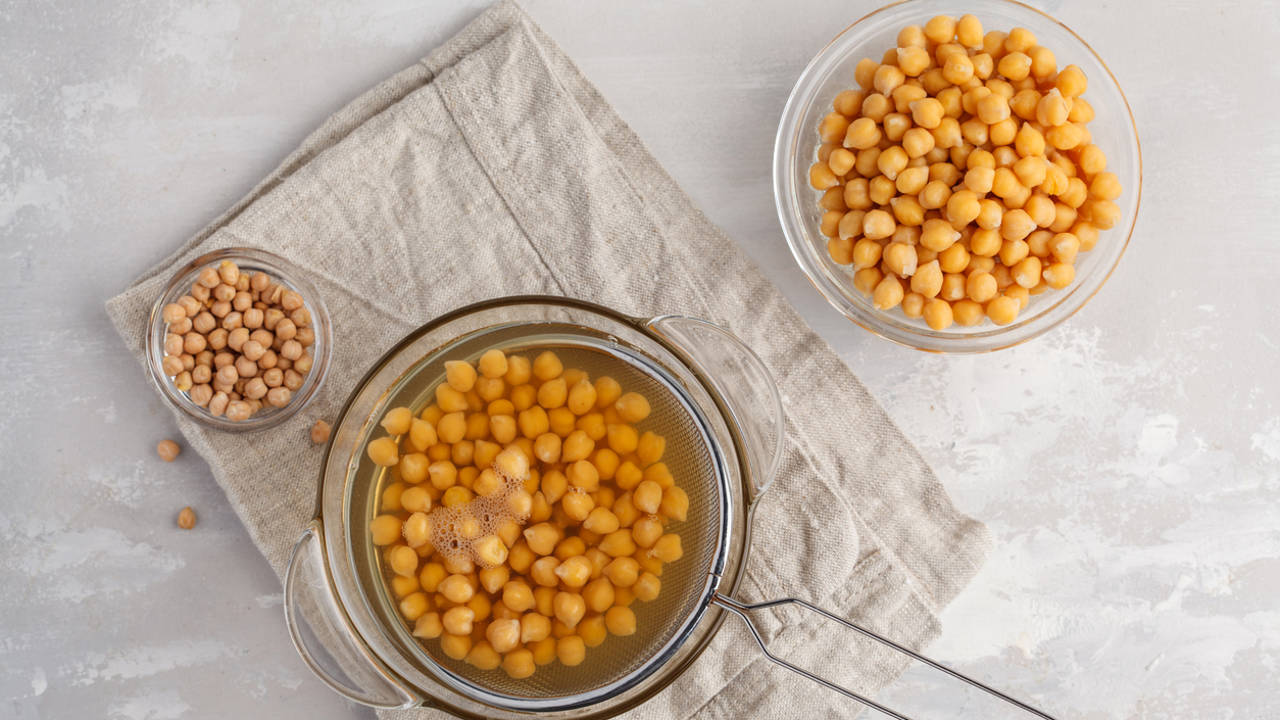Phytic acid is a substance found in many plant foods. It is considered an antinutrient because it negatively influences the absorption of minerals and trace elements. We explain how you can neutralize or reduce it.

Phytic acid is a plant compound that is often classified as an antinutrient. Phytic acid can bind to minerals (calcium, zinc, iron, etc.) So, the human body can no longer use them.
Whole grain cherries, legumes and nuts contain phytic acid in varying proportions. Excessive consumption of this compound could cause a nutritional deficiency. But this risk can be eliminated with measures that reduce phytic acid or even make it disappear. In short, phytic acid is not a reason for you to give up foods that are very healthy.
COOKING REDUCES PHYTIC ACID
Depending on the type of food, cooking has highly variable effects on ingredients. For example, cooking several legumes for 1 hour at 95°C resulted in a phytic acid neutralization of 23% in yellow peas, 20-80% in lentils and 11% in chickpeas. In contrast, in black beans the reduction was only 0.29%.
In addition to the food itself, other factors that influence are temperature, cooking time and the amount of water.
SOAKING NEUTRALIZES PHYTIC ACID
When legumes and cereals are immersed in water, phytase, an enzyme contained in seeds that neutralizes or breaks down phytic acid during germination, is activated.
With a soaking time of 24 hours, the phytic acid content in millet is reduced by 28%; in corn, by 21%; in rice, by 17%; and in soybeans, by 23%.
No phytic acid is detected in the soaking water, indicating that the plant substance is enzymatically decomposed.
However, soaking also causes significant losses of micronutrients such as iron (up to 40%) and zinc (up to 30%).
GERMINATION NEUTRALIZES 60% OF PHYTIC ACID
To germinate them, the seeds are soaked in a small amount of water, drained and kept moist for several days until they begin to sprout.
Unlike soaking, a greater number of micronutrients is retained. The amount of phytic acid that is neutralized depends on the species and variety of the plant, germination conditions and phytase activity. Neutralization of 60% (or more) of phytic acid can be expected.
FERMENTATION NEUTRALIZES PHYTIC ACID VERY WELL
During fermentation, microorganisms are added to foods that break down various food ingredients. Fermentation (for example, by the action of sourdough on bread) neutralizes a large part of the phytic acid.
By lowering the pH value to 4 or 5, lactic acid bacteria activate the phytases contained in the seeds and bacterial enzymes are also produced with which they also contribute to degradation.
Fermentation also improves the availability of iron, zinc and calcium by breaking down phytic acid and other ingredients.
Iron absorption from phytic acid-rich meals is improved when the lactic acid-producing bacteria of sauerkraut or yogurt are taken.
VITAMIN C INHIBITS THE NEGATIVE EFFECTS OF PHYTIC ACID
By intelligently combining foods, the inhibitory effect of phytic acid on nutrient absorption can be avoided.
In this sense, foods rich in vitamin C, such as citrus fruits, kiwi or red pepper, improve the availability of iron.
TRADITIONAL PREPARATION OF CEREALS
Actually, the problem of phytic acid is not new. The methods of traditional cooking show how phytic acid can be reduced to continue consuming legumes and cereals without any worries: soaking overnight, prolonged cooking, and accompaniment of foods rich in vitamin C. Occasionally, fermentation is added, as we will see in the following recipe.
MILLET AS IN AFRICA
The millet is soaked in water overnight and then mashed in a mortar and pestle (you can do this with the same water or replace the soaking water with fresh water).
The resulting porridge is left to rest one more night in a warm place so that fermentation can begin. Lactic acid bacteria, which are present everywhere in the air, will soon populate the millet porridge and neutralize or break down the phytic acid. On the third day, millet porridge is cooked quietly for a quarter of an hour.
Another option would be to mix the porridge with herbs, sea salt and finely grated vegetables, pour it on a baking tray (lined with baking paper) and let it dry in the sun for a few hours.
With this method you can also prepare other types of cereals, including brown rice.
WHEAT AS IN EGYPT
In Egypt and some Arab countries, corn and wheat dishes are also made in a similar way. Kishk, for example, is a fermented dish made with parboiled wheat and milk.
The wheat is boiled, dried again, ground, the bran is sifted and mixed with sour and salted milk. After 48 hours of fermentation, the dough is thoroughly mixed and dried balls are formed.
THE CORRECT PREPARATION OF LEGUMES
Before cooking legumes (for example, beans and chickpeas), they are soaked, preferably overnight or, better yet, for 24 to 48 hours. You can tell if you’ve soaked long enough because they’re soft enough to chew (but don’t eat them yet).
The water from the soaking is poured and the legumes are simmered in water (for different periods of time, depending on the variety).
By combining soaking and cooking, the phytic acid content in beans can be reduced by about 60%.
If you’re planning a stew or soup, always cook legumes separately and add them when they’re fully cooked. In this way, the rest of the ingredients (vegetables) do not suffer the long cooking times of legumes.
PHYTIC ACID HAS A POSITIVE SIDE
Despite everything we have told you, it is also true that phytic acid has some positive effects on health, so it is not bad news that the indicated tricks do not eliminate it completely. In small doses it is beneficial.








